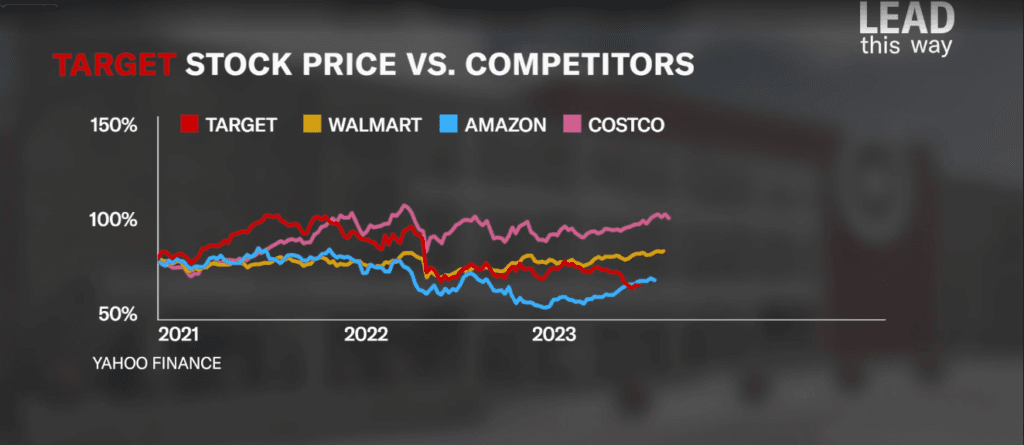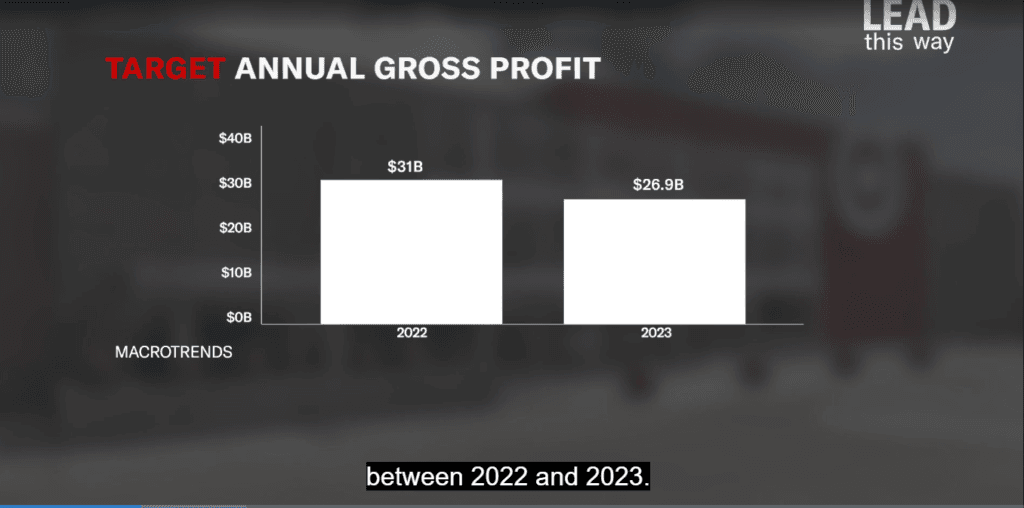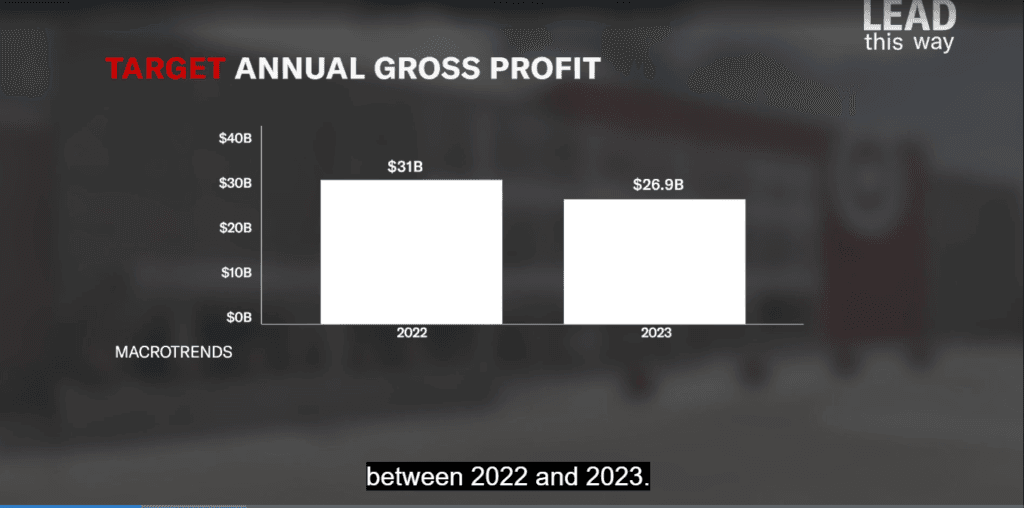
Target Corporation, a staple in the U.S. retail landscape, faced significant hurdles during the fiscal third quarter of 2024. Despite efforts to enhance customer traffic and boost sales through price cuts and early holiday promotions, the company fell short of Wall Street’s expectations. This article delves into Target’s recent performance, the underlying challenges it faces, and the strategic adjustments it is making to remain competitive in a shifting retail environment.
Key Financial Highlights and Missed Expectations

Target reported disappointing results for its third quarter, with earnings and revenue missing analysts’ projections. Here’s a snapshot of the reported figures versus expectations:
- Earnings per share (EPS): $1.85, falling short of the $2.30 expected—a 20% miss, marking the largest gap in two years.
- Revenue: $25.67 billion, below the projected $25.90 billion.
- Net income: Down 12% year-over-year to $854 million from $971 million.
These underwhelming results, coupled with reduced guidance for the full year, sent Target’s shares plummeting over 20% in morning trading, hitting a 52-week low.
Shifts in Consumer Behavior

Target’s challenges highlight a broader trend in the retail industry: selective consumer spending. After enduring years of rising costs for essentials such as food and housing, shoppers have become increasingly cautious. Target’s Chief Commercial Officer, Rick Gomez, underscored this reality, noting that consumers are now “resourceful and strategic” in their shopping habits. Shoppers wait for optimal deals before making purchases, often bypassing full-price items unless necessary.
Strategies to Woo Price-Sensitive Shoppers

Target attempted to counteract these trends by lowering prices on frequently purchased items:
- Price Cuts on Essentials: Since May, the company has reduced prices on over 10,000 items, including household staples like diapers, bread, and milk.
- Holiday Discounts: In October, it further slashed prices on more than 2,000 holiday-season products, such as toys and cold medicine.
Despite these efforts, price reductions failed to significantly boost Target’s overall performance. Comparable sales for the quarter grew by a modest 0.3%, falling short of the 1.5% growth analysts had anticipated. Notably, in-store sales declined by 1.9%, while digital sales provided a rare bright spot with a 10.8% year-over-year increase, driven by strong demand for curbside pickup and same-day delivery.
Key Categories Driving Sales

Certain product categories outperformed others, shedding light on shifting consumer priorities:
- Food and Essentials: These categories saw low single-digit growth as consumers focused on purchasing necessities.
- Beauty Products: Sales from Target’s partnership with Ulta Beauty grew over 6%, reflecting steady demand for affordable self-care items.
In contrast, discretionary categories like clothing and home goods continued to struggle, contributing to Target’s uneven performance.
Operational Challenges: Supply Chain Pressures

In addition to soft consumer demand, operational challenges hampered Target’s results. The company incurred higher supply chain costs due to:
- Port Strike Preparations: In anticipation of a potential labor strike at key shipping ports in October, Target expedited shipments and rerouted inventory, resulting in increased costs. Although the strike lasted only a few days, its impact lingered.
- Excess Inventory: The rushed shipments led to fuller storage facilities earlier in the quarter, reducing efficiency and increasing operational expenses.
These logistical adjustments, while necessary to ensure a robust inventory for the holiday season, weighed heavily on the company’s margins.
Comparison with Walmart

Target’s performance contrasts sharply with that of Walmart, its closest competitor. Walmart reported stronger sales in discretionary categories for the second consecutive quarter and continued to gain market share among higher-income households. The divergence between the two retailers can largely be attributed to differences in their sales mix:
- Walmart: Groceries account for 60% of its U.S. revenue, offering a stable revenue stream during economic uncertainty.
- Target: Groceries make up just 23% of its revenue, leaving the company more reliant on discretionary spending, which has been sluggish.
The Role of Loyalty Programs and Promotions
Target has leveraged its loyalty program, Circle, to drive customer engagement. During its October promotional event, Circle Week, Target saw its biggest sales to date for the program, with 3 million new members joining. Gomez noted that these events underscore the importance of value-driven promotions in attracting and retaining shoppers.
However, while loyalty programs and discounts may boost short-term sales, they also squeeze profit margins. The challenge for Target lies in balancing value for consumers with financial sustainability.
Revised Full-Year Outlook
Given its Q3 performance, Target has adjusted its full-year profit guidance downward. It now expects adjusted earnings per share to range from $8.30 to $8.90, compared to its previous forecast of $9 to $9.70. This revision reflects ongoing challenges, including discretionary spending declines and elevated operational costs.
Long-Term Outlook: A Mixed Bag
Despite the current challenges, Target remains optimistic about its long-term prospects. CEO Brian Cornell emphasized the company’s resilience and commitment to adapting to market conditions. Key elements of its long-term strategy include:
- Enhancing Digital Capabilities: With strong growth in digital sales, Target plans to continue investing in e-commerce and delivery options to meet changing consumer preferences.
- Expanding Successful Categories: Categories like beauty, food, and essentials will remain focal points for growth.
- Innovative Merchandise: Target’s ability to introduce fresh, eye-catching products—such as seasonal items and exclusive collections—will be crucial in maintaining its relevance.
Stock Performance and Investor Sentiment
Target’s stock has lagged behind broader market indices, reflecting investor concerns. While the S&P 500 has gained approximately 24% this year, Target’s shares are up just 9.5%. The company’s current share price of around $155 is a far cry from its pandemic-era highs of nearly $270.
The stock’s underperformance underscores the need for Target to demonstrate its ability to navigate current challenges and return to consistent growth.
Conclusion
Target’s Q3 results highlight the pressures facing retailers in a volatile economic environment. From cautious consumer spending to operational inefficiencies, the company is grappling with multiple headwinds. However, Target’s strategic initiatives—such as price reductions, loyalty programs, and investments in digital sales—offer a pathway to recovery.
As the holiday season unfolds, all eyes will be on Target’s ability to capitalize on consumer demand and execute its strategies effectively. While challenges remain, the company’s resilience and adaptability will determine its trajectory in the months and years ahead.


